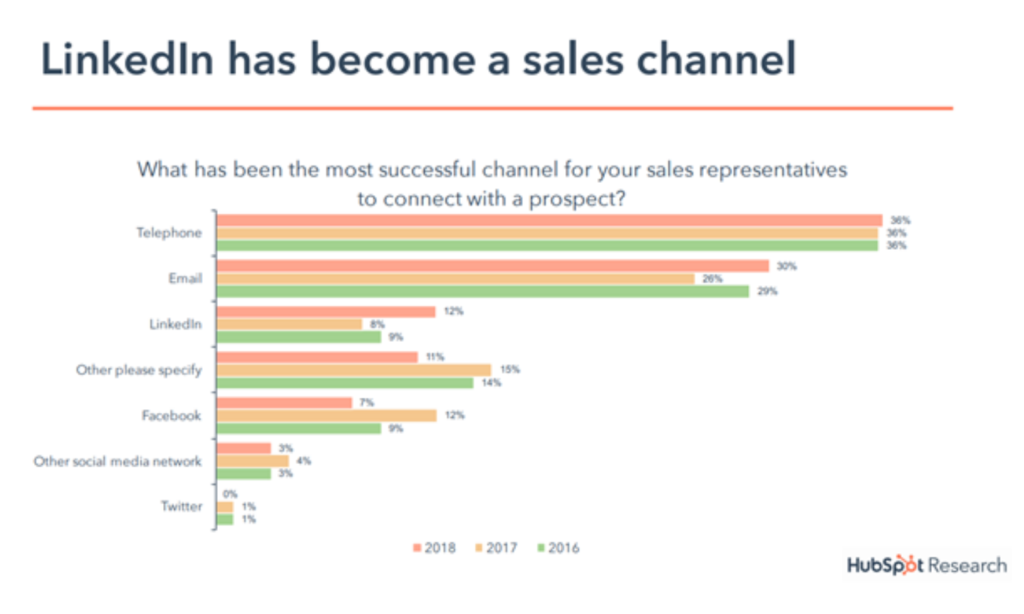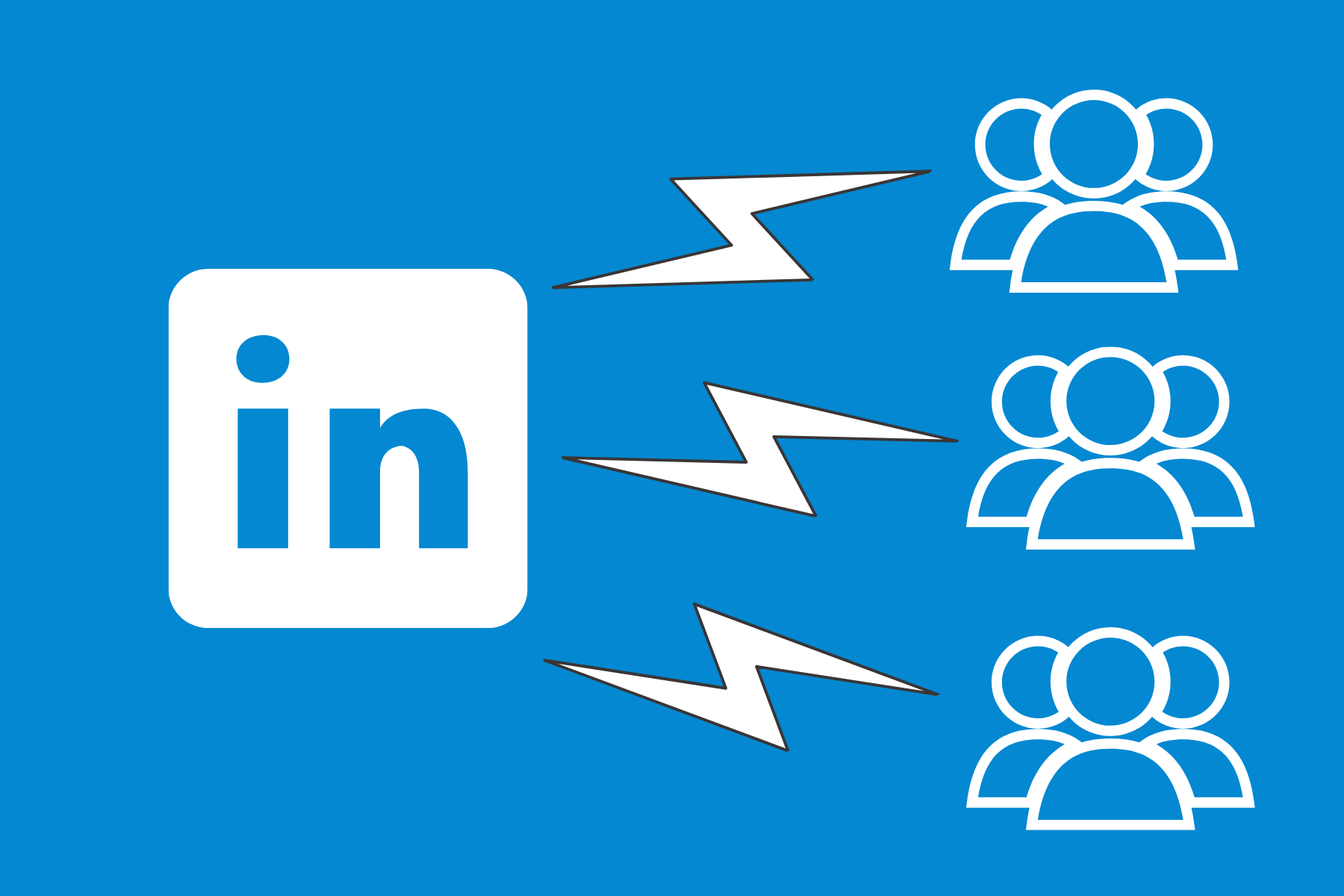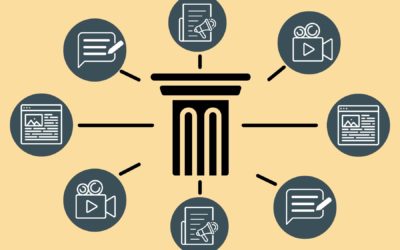LinkedIn lead generation
There is little doubt that for B2B sales and marketing teams, LinkedIn lead generation has become a Go-To strategy for targeting, connecting and engaging with their target audience. In fact, in a recent study by Hubspot they found that:
“LinkedIn’s lead conversion rates are 3x higher than other major ad platforms such as Google Adwords”
Over the past few years LinkedIn has become a sales channel in its own right, as these Hubspot research findings show.  So why do so many marketers and salespeople struggle to find success in leveraging the power of the platform and actually come across as spammy when using it – and damage their reputation in the eyes of prospective buyers? The main problem is that people have simply moved their traditional ‘push’ mentality on to LinkedIn. By interrupting people with their messages, they are alienating them before they even get the chance to start a conversation, which is what ‘social media’ should be about. The answer is to embrace the inbound mentality of ‘pull’ and to attract people by engaging, sharing and helping them prior to connecting. In this post I will share six ideas that will help you to unlock the power of LinkedIn for your own lead generation.
So why do so many marketers and salespeople struggle to find success in leveraging the power of the platform and actually come across as spammy when using it – and damage their reputation in the eyes of prospective buyers? The main problem is that people have simply moved their traditional ‘push’ mentality on to LinkedIn. By interrupting people with their messages, they are alienating them before they even get the chance to start a conversation, which is what ‘social media’ should be about. The answer is to embrace the inbound mentality of ‘pull’ and to attract people by engaging, sharing and helping them prior to connecting. In this post I will share six ideas that will help you to unlock the power of LinkedIn for your own lead generation.
1. Create a buyer centric profile
Personal branding is everything in the modern digital and social media space and creating a ‘buyer-centric’ LinkedIn profile that resonates with buyers is key to using the platform to generate meaningful leads. As with everything else in marketing and sales, you must write your LinkedIn profile to attract your buyer and talk to them, making sure the first thing they read in your profile is how you address the challenges they face and the pains they feel. So, unless you are looking for a job, stop talking (in your profile) about yourself and start talking about who you help and how, and why you are the best at this.
“75% of business-to-business (B2B) buyers use social media to research vendors” LinkedIn
Remember that people will research you before connecting, engaging and starting a conversation. Accordingly, make sure your LinkedIn profile makes them want to connect with you and that they see value from doing so.
2. Find the right people
The buying process, certainly in B2B sectors, is no longer a single person but multiple people within an organisation. Statistics show that an average of 5.4 people are involved in making buying decisions within a business. The good news is that on LinkedIn you can identify people within companies and their positions. This ability to target and reach out to prospective buyers has never been easier. Remember that you are not just finding the obvious buyer in a company. You are also identifying the decision-making group (DMG) around that buyer too. So, make sure you spend time connecting with multiple people within a company and ‘surrounding’ the buyer’s sphere of influence.
3. Create digital insights to educate
When we talk about understanding our buyer, their challenges and pain points, we also need to understand what questions they ask as they move along their buying journey. We can then produce content and digital insights to educate and inform our buyer at every stage of their journey. The insights should naturally start compelling sales conversations, build trust and authority plus position you as a ‘thought-leader’, the person the buyer really needs to be speaking to. Focus on producing content that answers questions and particularly:
- Pricing and costs – The main question we all have is: How much will this cost?
- Problems and issues – Alert buyers to potential problems and how to avoid them.
- Compare and Contrast – As the buyer moves into the consideration stage of their buying journey they will have a number of solutions they are comparing – so help them with that comparison by producing honest content around the topic.
- Reviews – Produce and share reviews with buyers, use case studies and testimonials but also review other products in the market and give an honest opinion to help the buyer make the right buying decision.
- Best In Class – Be honest about what product, service or solution is best in class and why. Remember that the buyer is on your website when they are consuming this content so don’t be scared about being honest and transparent.
Regarding this last point, honesty and transparency are highly valued. These are the areas that buyers worry about. They fear what they are not being told. Keep your prospective buyers engaged with digital insights which will make them think differently about their priorities; i.e. they can put their worries to one side when engaging with you.
4. Actively engage with your prospects every day
Now you have identified the right people on LinkedIn, make sure you set a daily cadence for keeping yourself front-of-mind with them. This is one of the key skills in a busy connected world and is achieved by being socially active every day on Linkedin through:
- Posting regularly with interesting insights
- Tagging in businesses and individuals
- Commenting on your prospects’ posts
- Liking & Sharing your contacts’ content
- Demonstrating thought leadership, by becoming a voice of authority.
- Networking with existing influencers in your market
- Practicing social listening, by replying to mentions and messages one-to-one.
Our goal is to increase viral exposure and improve the probability of mindshare (i.e. being front-of-mind), by unlocking the power of social media.
5. Develop and grow relationships with people
You have done all the hard work, now you need to develop the relationships you are creating. Every day you should focus on:
- Checking who has looked at your Linkedin profile.
- Answering mentions and tags personally on Twitter and Linkedin.
- Responding to direct messages.
- Looking at who has liked, commented on and shared your content on Linkedin.
The goal is to grow an engaged network of connections who introduce you to other connections. Do not try selling directly to people on LinkedIn, it will damage your reputation and people will disconnect with you. As mentioned in our opening gambit, LinkedIn is not a place to ‘push’.
6. Measure your effectiveness with the right metrics
As with all marketing and sales activities, you need to measure how effective you are being with your LinkedIn presence and lead generation, so here are some metrics to measure:
- Appointments / meetings generated.
- Sales opportunities generated.
- Number of LinkedIn messages sent.
- Volume of content / insights shared.
- Your LinkedIn Social Selling Index (SSI) Score. You can get your free score here https://business.linkedin.com/sales-solutions/social-selling/the-social-selling-index-ssi
Remember to align your metrics with marketing and sales activities, craft a common goal and then create more specific goals for each department – then set a timeline and milestones to achieving those goals. In summary – Be consistent, persistent and helpful The key to success with LinkedIn and using it as an effective lead generation tool, is to be consistent every day and commit 60 to 90 minutes per day to the above. After a few months you will have built up a great engaged network of connections, the majority of whom will be your target audience (‘good-fit buyers’) or partners / third parties that can introduce you to good-fit buyers. Always be helpful to everyone you meet, give them time, listen to their conversations and add value at every touch point – and you will reap the benefits of LinkedIn.






